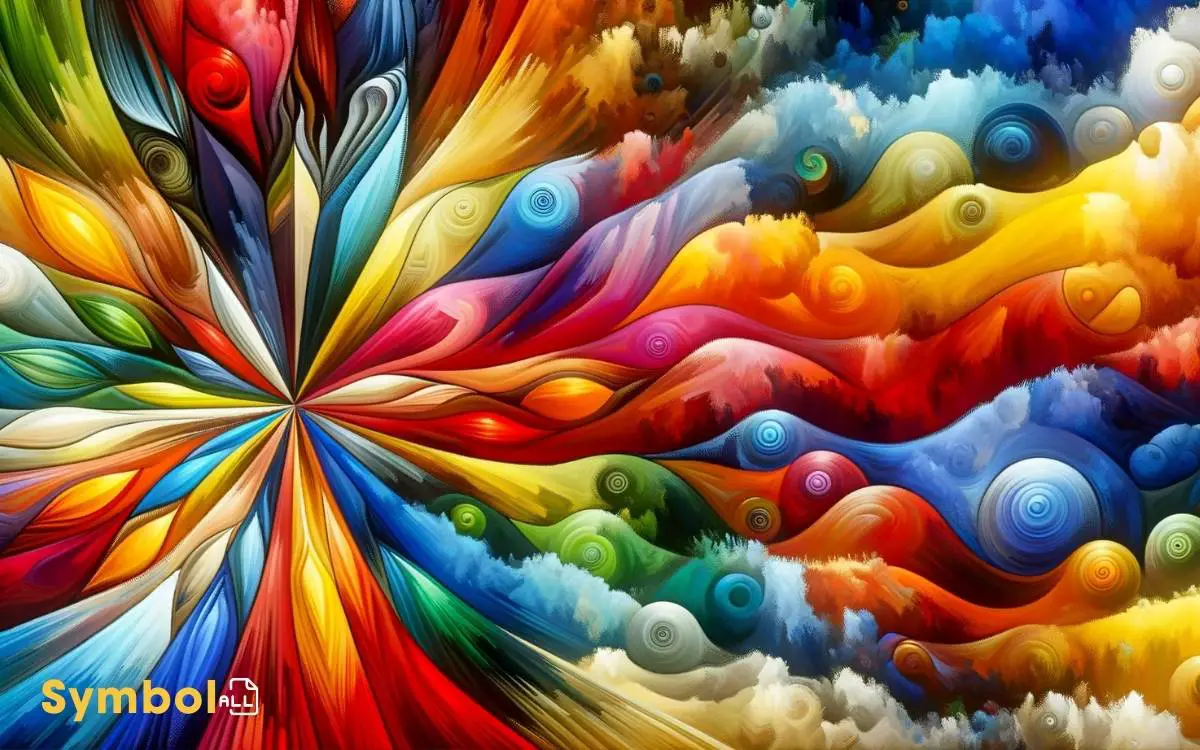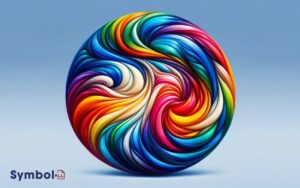What Does Joseph’s Coat of Many Colors Symbolize? Favoritism
Joseph’s coat of many colors symbolizes more than just a garment; it embodies favoritism, divine providence, and eventual prosperity.
In ancient societies, such clothing denoted wealth and status. For Joseph, it marked him as favored by his father, setting off sibling rivalry and a tumultuous journey from slavery to leadership.
It’s not merely about parental preference; it encapsulates dreams, ambitions, and the eventual fulfillment of destiny under divine guidance.
The coat’s array of colors also hints at deeper symbolic meanings, enriching the narrative with layers of interpretation regarding identity, transformation, and leadership.
Exploring these symbols further uncovers a legacy that has influenced culture, literature, and art, offering profound insights into human nature and divine orchestration.

Key Takeaways
Historical Context
To understand the symbolism of Joseph’s coat of many colors, it’s essential to explore its historical context within ancient Near Eastern societies. In these cultures, clothing wasn’t just practical; it carried deep social and political meanings.
A multicolored garment, such as Joseph’s, wasn’t common due to the labor-intensive process and the expense of producing multiple dyes. Therefore, owning such a coat signified wealth, status, or a special role within a community.
It’s noteworthy that textiles in the ancient Near East were highly valued, often used as gifts to honor individuals or to mark significant life events.
This background helps you grasp why Joseph’s coat could provoke such intense reactions, as it wasn’t simply a piece of clothing but a symbol laden with implications of favor and distinction in a highly stratified society.
Parental Favoritism
You’ll observe that Joseph’s coat, a gift from his father, isn’t merely a garment but a symbol of parental favoritism that has profound implications.
This act of preference impacts Joseph and his siblings emotionally, intensifying sibling rivalry and disrupting the dynamics within the family.
Favoritisms Emotional Impact
Parental favoritism, as demonstrated by the gift of Joseph’s coat of many colors, deeply affects children’s emotional well-being and self-perception.
This tangible symbol of preference can greatly influence how a child views themselves within the family dynamic, impacting their confidence and sense of belonging.
- Identity Formation: Favoritism can skew a child’s understanding of their worth, tying their value to external validation rather than intrinsic qualities.
- Emotional Security: Children who perceive themselves as less favored may struggle with feelings of inadequacy and rejection, affecting their emotional stability.
- Self-Esteem: The favored child might develop an inflated sense of self, while others may suffer from lowered self-esteem due to perceived inadequacies.
Understanding these impacts is essential for fostering a nurturing and equitable family environment.
Sibling Rivalry Intensification
In the context of Joseph’s coat of many colors, the importance shown by Jacob not only marked the beginning of profound sibling rivalry but also set the stage for its intensification.
This tangible symbol of preference served not merely as a catalyst for envy but as a perpetual reminder of unequal status among the brothers.
The resultant intensification of sibling rivalry transcends mere jealousy, embedding a deep-seated animosity that fragments familial bonds.
It’s vital to analyze how this gift, intended or unintended, escalates existing tensions, transforming them into a complex web of resentment.
The coat, hence, isn’t just a garment of distinction but a harbinger of discord, illustrating how preferential treatment can exacerbate sibling rivalry, leading to long-lasting implications within the family structure.
Family Dynamics Disruption
While Jacob’s favoritism towards Joseph, epitomized by the gift of the coat of many colors, may seem like a mere act of paternal affection, it fundamentally disrupts the family dynamics, setting a precedent for discord and division.
- Erosion of Sibling Bonds: The overt favoritism erodes the foundational bonds among siblings, fostering an environment ripe for jealousy and conflict.
- Distortion of Parent-Child Relationships: It skews the perception of parental love, making it seem conditional and scarce, thereby warping children’s expectations and interactions with authority figures.
- Catalyst for Future Strife: This act of favoritism doesn’t just affect the immediate family; it plants the seeds for future discord, affecting generations to come, as seen in the unfolding biblical narrative.
Analyzing these dynamics, you gain insight into the profound impact of parental favoritism on family cohesion and individual development.
Sibling Rivalry Catalyst
You’ll find that Joseph’s coat of many colors serves not merely as a garment but as a potent symbol igniting sibling rivalry.
Its presentation by Jacob to Joseph underscores a blatant display of favoritism that exacerbates existing tensions among the brothers.
This act catalyzes a conflict rooted in envy, thereby fueling a division that’s both profound and enduring.
Envy Sparks Conflict
Joseph’s receipt of the coat of many colors from his father, Jacob, ignited a fierce envy among his brothers, serving as a catalyst for the ensuing sibling rivalry that shapes their familial narrative.
This coat, more than just a garment, symbolizes a deeper discord rooted in perceived favoritism and unequal love.
- Visual Distinction: The coat set Joseph apart, visually manifesting his special status in their father’s eyes.
- Emotional Turmoil: This favoritism stirred deep-seated feelings of inadequacy and resentment among the brothers.
- Actionable Grievance: The tangible symbol of the coat transformed latent envy into active conflict, leading to drastic actions against Joseph.
Analyzing this episode reveals how symbols can exacerbate underlying tensions, pushing them into the open and precipitating conflict within familial structures.
Favoritism Fuels Division
Building on the symbolism of Joseph’s coat, it becomes evident how favoritism acted as a powerful catalyst for division and intensified the sibling rivalry within the family.
This coat wasn’t merely a garment of many colors; it was a tangible representation of Joseph’s favored status, conferred upon him by his father, Jacob.
This preferential treatment didn’t just spark envy; it laid the groundwork for a deep-seated division that transcended mere sibling rivalry, evolving into a profound familial schism.
Analyzing this dynamic reveals that favoritism disrupts the equilibrium of familial bonds, fostering an environment where jealousy and conflict flourish.
Consequently, the coat symbolizes not only Joseph’s unique position but also the unintended consequences of favoritism, highlighting its capacity to fracture even the closest of family ties.
Dreams and Ambitions
Dreams and ambitions, woven into the fabric of Joseph’s narrative, serve as a pivotal element that shapes his journey from a favored son to a key figure in Egypt.
His dreams, rich in symbolism and foreshadowing, aren’t merely personal aspirations but divine revelations that guide his path and influence his actions.
- Prophetic Nature: Joseph’s dreams reveal a future where he rises to a position of power and influence, highlighting the divine purpose behind his ambitions.
- Guidance and Perseverance: These dreams inspire Joseph to navigate through life’s trials with resilience, understanding that his hardships are stepping stones towards his destiny.
- Spiritual Insight: Joseph’s ability to interpret dreams underscores the importance of spiritual wisdom in achieving one’s ambitions, setting him apart as a man of both vision and virtue.
Envy and Betrayal
Amidst the threads of Joseph’s narrative, envy and betrayal emerge as dark hues, painting a complex picture of human relations within his family.
The coat of many colors, a gift from his father, symbolizes not just favoritism but also the rift it creates among siblings.
Your understanding of this story deepens when you see the coat as a catalyst for envy, leading Joseph’s brothers to betray him.
This act of betrayal, selling Joseph into slavery, is a significant reminder of how envy can corrupt familial bonds and lead to devastating actions.
It’s essential to recognize that this narrative isn’t just about the physical garment but also about the emotional and psychological impact of favoritism and the destructive nature of envy and betrayal within a family dynamic.
Coats Cultural Significance
Moving beyond the familial discord ignited by Joseph’s coat, it’s important to explore the broader cultural significance of coats in historical and contemporary contexts. Coats have long been symbols of status, protection, and identity across various societies.
Their meaning extends far beyond mere function, intertwining with the social fabric to convey messages about the wearer.
- Status Symbol: Historically, the quality and style of a coat could indicate a person’s social standing and wealth.
- Protection and Practicality: Beyond physical protection from the elements, coats also serve as metaphors for shelter and safety in a tumultuous world.
- Identity and Belonging: Coats can signify affiliation with certain groups, professions, or ideologies, acting as wearable emblems of identity.
Analyzing coats in this light offers a deeper understanding of their enduring significance.
Divine Providence
In analyzing the symbolism of Joseph’s coat of many colors, it’s important to contemplate the theme of divine providence, which highlights the narrative’s deeper theological implications.
This vibrant garment isn’t merely a token of Jacob’s favoritism but symbolizes the divine orchestration at play in Joseph’s life.
It’s a tangible representation of how divine will can manifest in material forms, guiding Joseph from his initial descent into slavery to his eventual rise to power in Egypt.
The coat, thus, serves as a harbinger of the extraordinary path that divine providence charts for an individual.
This understanding elevates the coat from a simple object of envy to a profound emblem of the unseen hand that guides and shapes destinies according to a divine plan, underscoring the intricate workings of providence in the tapestry of human history.
Identity and Transformation
Joseph’s coat of many colors often symbolizes the transformative journey of his identity, marking a pivotal shift from a favored son to a powerful leader in Egypt.
This garment represents more than a token of Jacob’s love; it embodies the complexities of Joseph’s evolving self and his path towards realizing his intrinsic worth and destiny.
- Emblem of Distinction: The coat sets Joseph apart, not just in his father’s eyes, but as one destined for greatness.
- Catalyst for Adversity: It ignites jealousy and betrayal, propelling Joseph into circumstances that forge his character.
- Symbol of Resilience: Despite the coat being stripped from him, Joseph’s true colors shine through adversity, reflecting his growth and adaptability.
Understanding this, you grasp the profound layers of meaning behind Joseph’s colorful garment, highlighting the intricate dance between identity and transformation.
Journey of Forgiveness
As we explore the symbolic significance of Joseph’s coat of many colors, it becomes clear that his journey embodies not only a transformation of identity but also a profound narrative of forgiveness.
This garment, initially a symbol of his father’s favoritism, becomes an artifact of envy and betrayal by his brothers.
Yet, it’s within this context of rejection and hardship that Joseph’s capacity for forgiveness is cultivated and ultimately expressed.
| Aspect | Symbolism | Outcome |
|---|---|---|
| Coat | Favoritism | Envy & Betrayal |
| Betrayal | Test of Character | Growth & Resilience |
| Forgiveness | Rebirth & Renewal | Healing & Unity |
Joseph’s forgiveness towards his brothers, despite their grave mistreatment, underscores the coat’s transformative power.
It symbolizes not only the shedding of past grievances but also the weaving of a new narrative centered around reconciliation and understanding.
Reconciliation Symbol
Delving deeper into the narrative, one observes that Joseph’s coat, beyond its initial representation, becomes a potent symbol of reconciliation, reflecting the mending of fractured relationships and the restoration of familial bonds.
This coat’s journey from a token of favoritism to a catalyst for reunion underscores its symbolic transformation:
- Forgiveness and Acceptance: The eventual return of the coat to Jacob signifies Joseph’s forgiveness towards his brothers, highlighting a pivotal moment of acceptance and understanding.
- Healing of Past Wounds: The reconciliation scene encapsulates the healing of deep-seated wounds within the family, facilitated by Joseph’s magnanimity.
- Restoration of Family Unity: It heralds the restoration of unity among Jacob’s sons, symbolizing the reknitting of a family once torn apart by jealousy and strife.
Leadership and Authority
Beyond its role in reconciliation, the coat of many colors also embodies the themes of leadership and authority within Joseph’s narrative.
You’ll find that in ancient cultures, specific garments often denoted one’s status and potential roles within society.
In Joseph’s case, the coat, a gift from his father Jacob, wasn’t merely a sign of paternal affection but a symbol of chosen leadership and authority among his siblings.
This preferential treatment indicated Jacob’s intention for Joseph to assume a position of prominence, setting the stage for future events.
The coat’s vivid colors and unique design further underscored Joseph’s separation from his brothers, not just in his father’s eyes but in the destined leadership role within his family and beyond.
This symbol becomes a pivotal point for understanding the dynamics of power, favoritism, and leadership in biblical narratives.
Promise of Prosperity
You’ll find that Joseph’s coat of many colors symbolizes not just a paternal favor, but also a divine assurance of prosperity.
This garment signifies wealth’s material manifestation, indicating a future where Joseph transcends his initial misfortunes.
Analyzing this, you uncover layers of meaning that suggest a shift from favored son to a figure of substantial influence and affluence.
Wealths Divine Assurance
Joseph’s coat of many colors, often interpreted as a tangible sign of his father’s favoritism, also symbolizes a divine promise of prosperity that transcends mere material wealth.
This garment represents not just physical abundance but a deeper, spiritual bounty assured by divine will.
- Spiritual Richness: The coat signifies a richness of spirit and a depth of character that’s cultivated through divine favor and guidance.
- Unwavering Faith: It reminds you of the importance of faith in guiding life’s challenges, suggesting that spiritual wealth is intertwined with unwavering belief in the divine.
- Inherent Worth: Beyond material possessions, the coat symbolizes the inherent value and potential within each individual, blessed and recognized by a higher power.
This interpretation invites a reflective exploration of wealth’s true essence, encouraging a pursuit of prosperity that’s both profound and holistic.
Favors Material Manifestation
While the spiritual significance of Joseph’s coat is profound, its manifestation in the material domain serves as a clear indication of the prosperity promised to him.
This vivid garment symbolizes more than mere favoritism; it represents a tangible marker of Joseph’s destined elevation above his brothers.
In the ancient context, such a coat wouldn’t only have been expensive but also a sign of authority and future leadership. It’s a prelude to Joseph’s journey from the depths of slavery to the heights of Egyptian governance.
Analyzing this, you realize the coat’s colors aren’t just about diversity or beauty; they encapsulate the promise of abundant resources and success.
It’s a confirmation to the belief that divine favor often manifests through material prosperity, marking an individual for greatness.
Colors Symbolic Meanings
Throughout history, colors have held profound symbolic meanings, shaping cultural narratives and personal identities. In the context of Joseph’s coat, each color woven into the fabric carries its own weight of symbolism, contributing to a deeper understanding of his story.
- Red: Often symbolizes passion, sacrifice, or danger, reflecting Joseph’s turbulent journey and the bloodshed it entailed.
- Green: Represents fertility, growth, and renewal, mirroring Joseph’s eventual prosperity in Egypt.
- Purple: A color of royalty and nobility, hinting at Joseph’s rise to power and status.
Analyzing these colors, you’re invited to appreciate not just the aesthetic appeal of Joseph’s coat, but also the rich, layered meanings it encapsulates. This symbolic use of colors enhances the narrative, making it resonate on multiple levels with its audience.
Legacy and Influence
The legacy of Joseph’s coat of many colors extends beyond its biblical origins, influencing various cultural, religious, and artistic expressions throughout history.
You’ll find its impact in literature, where authors draw parallels to themes of favoritism and redemption.
In art, the coat’s vibrant hues inspire visual representations that evoke a sense of diversity and unity. Religious teachings often use the story to discuss the complexities of family dynamics and divine providence.
| Field | Influence |
|---|---|
| Literature | Themes of favoritism and redemption |
| Art | Inspiration for diversity and unity |
| Religion | Discussions on family and providence |
| Cultural Icon | Symbol of identity and difference |
This table underscores the wide-reaching influence of Joseph’s coat, highlighting its role as a symbol of identity, difference, and the universal search for meaning.
Conclusion
In your journey through the vibrant threads of Joseph’s coat, you’ve encountered a tapestry of human emotions and divine promises.
It’s no coincidence that this garment, steeped in favoritism, became the catalyst for sibling rivalry, yet also symbolized Joseph’s destined rise to authority and prosperity.
Each color weaves its own tale of ambition, envy, and eventual reconciliation, echoing the universal quest for understanding and redemption.
Analyzing its legacy, you realize this coat isn’t just a relic; it’s a profound narrative of human complexity and divine orchestration.






